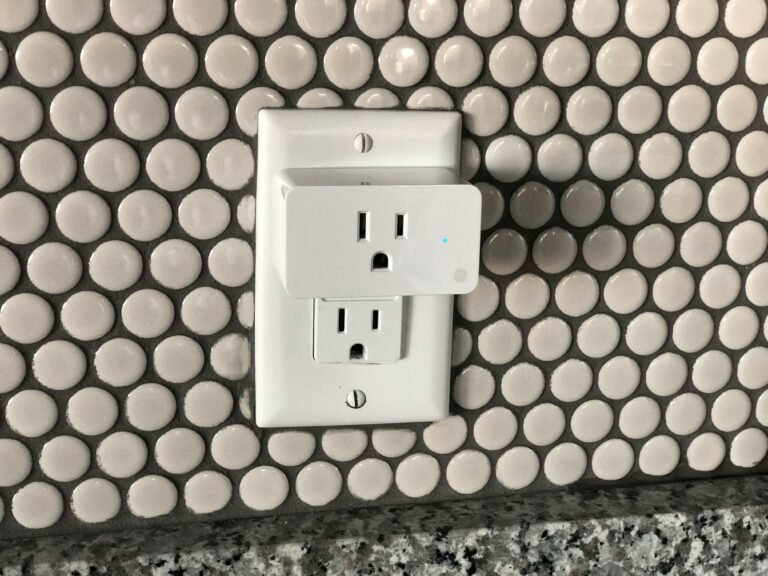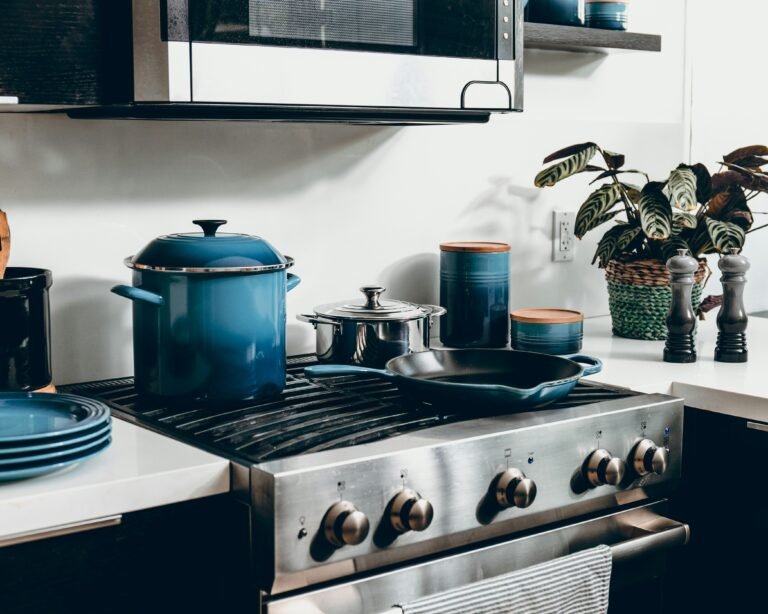Introduction
In 2024, smart plugs have emerged as unsung heroes of the smart home ecosystem. These compact gadgets are turning ordinary electrical appliances into intelligent, controllable devices, fundamentally changing how we interact with our home environments. As part of the broader wave of smart innovation ideas, smart plugs exemplify how even the simplest devices can contribute to a smarter, more connected home.
Whether you’re an eco-conscious homeowner looking to reduce your carbon footprint, a tech enthusiast eager to embrace the latest in home automation, or simply someone seeking to enhance home safety and convenience, smart plugs offer a simple yet powerful way to upgrade your living space. Let’s dive into the world of smart plugs and discover how these small devices are making a big impact.
Bring your ideas to life with pro‑grade visuals—4K and 360°, watermark‑free. Start free where available and design with confidence.
Trusted by professionals for faster approvals, clearer communication, and fewer meetings.
Free trial availability depends on region/store. Final terms and pricing appear at checkout. Disclosure: This article contains affiliate links. If you buy through our links, we may earn a small commission at no extra cost to you.
Table of Contents
Understanding Smart Plugs: More Than Just an Adapter
At first glance, a smart plug might look like a simple adapter that you plug into your wall outlet. However, these devices are far more sophisticated. A smart plug acts as an intermediary between your electrical outlet and your appliance, adding a layer of intelligence and control.
Key features of modern smart plugs include:
- Wi-Fi connectivity for remote control via smartphone apps
- Scheduling capabilities for automated on/off cycles
- Energy monitoring to track power consumption
- Voice control compatibility with popular smart assistants
- Integration with other smart home devices and platforms
Smart plugs fit seamlessly into the broader smart home ecosystem, often serving as an entry point for those new to home automation. They offer a way to make “dumb” devices smart without replacing them entirely, making them a cost-effective and versatile addition to any home.
The Energy-Saving Potential of Smart Plugs
One of the most compelling benefits of smart plugs is their ability to help reduce energy consumption. They tackle a often-overlooked problem: phantom energy drain.
Phantom energy, also known as standby power, is the electricity consumed by devices when they’re turned off but still plugged in. While it might seem insignificant, it can account for up to 10% of a household’s energy bill. Smart plugs combat this waste by completely cutting power to devices when they’re not in use.
To maximize energy efficiency with smart plugs:
- Identify energy-hungry devices like entertainment systems or home office setups
- Use scheduling features to ensure these devices are only powered when needed
- Group multiple devices on a single smart power strip for easier management
- Regularly review energy consumption data provided by your smart plugs to identify further saving opportunities
Convenience at Your Fingertips: Automation and Remote Control
Smart plugs shine when it comes to adding convenience to your daily routines. Their scheduling capabilities allow you to automate when devices turn on and off, adapting to your lifestyle.
For example:
- Schedule your coffee maker to turn on just before you wake up
- Set your living room lamps to turn on at sunset and off at bedtime
- Ensure your hair straightener or iron turns off automatically, even if you forget
Remote access features take this convenience a step further. Forgot to turn off the slow cooker before leaving for work? No problem. With a smart plug, you can shut it off from your smartphone, no matter where you are.
Voice control integration adds another layer of ease. By connecting your smart plugs to voice assistants, you can control your devices hands-free. Simply say, “Turn off the living room lamp,” and it’s done.
Smart Plug Integration: Creating a Cohesive Smart Home
One of the most powerful aspects of smart plugs is their ability to integrate with other smart home devices and platforms. This integration allows for more complex and useful automations.
Many smart plugs are compatible with popular smart home platforms, allowing for seamless integration with your existing setup.
Integration examples:
- Link your smart plugs to your smart thermostat so that fans turn on automatically when the temperature rises
- Connect to motion sensors to turn on lights when you enter a room
- Use geofencing to trigger actions based on your location, like turning on the AC when you’re heading home
Creating automated routines can streamline your daily life. For instance, a “Movie Night” scene could dim the lights, turn on the TV and sound system, and power down non-essential devices, all with a single command.
The Financial Perspective: Cost-Benefit Analysis
When considering smart plugs, it’s important to look at both the initial investment and the potential long-term savings.
Initial investment:
- Basic smart plugs typically range from $20 to $40 each
- More advanced models with energy monitoring or multiple outlets can cost up to $60
Potential long-term savings:
- Energy bill reduction
- Extended lifespan of appliances due to reduced standby time
- Potential insurance discounts for homes with smart safety features
Factors affecting ROI:
- Number and type of devices connected to smart plugs
- Local electricity rates
- How consistently you use the energy-saving features
For many households, the initial investment in smart plugs can be recouped within 1-2 years through energy savings alone, with continued benefits thereafter.
Smart Plugs for Every Lifestyle: User Applications
Smart plugs are versatile devices that can be tailored to various lifestyles and needs:
For families:
- Control children’s device usage by scheduling power to gaming consoles or TVs
- Ensure potentially dangerous appliances (like irons) are turned off when not in use
For home offices:
- Automatically power on your office equipment before your workday starts
- Cut power to all devices at the end of the day to maintain work-life balance
For those with limited mobility:
- Control hard-to-reach outlets via voice commands or smartphone apps
- Set up automated routines to simplify daily tasks
For eco-conscious individuals:
- Monitor energy consumption of individual devices
- Identify and eliminate energy waste in your home
8. Advanced Features and Future Trends
As technology evolves, so do the capabilities of smart plugs. Some cutting-edge features include:
Energy monitoring:
- Real-time power consumption tracking
- Historical data analysis to identify usage patterns
Geofencing:
- Trigger actions based on your physical location
- Automatically turn devices on or off as you leave or approach home
AI-driven power management:
- Machine learning algorithms to predict usage patterns
- Automatic optimization of device schedules based on your habits
Looking ahead, we can expect to see even more advanced features:
- Improved integration with renewable energy systems
- Enhanced predictive capabilities for proactive energy management
- Greater emphasis on user data privacy and security
9. Choosing the Right Smart Plug: A Buyer’s Guide
When selecting a smart plug, consider the following factors:
- Compatibility with your existing smart home ecosystem
- Energy monitoring capabilities
- Maximum power rating
- Size and design (to ensure it doesn’t block adjacent outlets)
- Quality of the companion app
- Additional features like away mode or voice control
Always check the latest reviews and ratings before making a purchase, as the market evolves rapidly.
Common pitfalls to avoid:
- Buying plugs that aren’t compatible with your Wi-Fi network (e.g., 5GHz only)
- Overlooking the maximum power rating, leading to potential safety issues
- Choosing plugs with complex setup processes that may frustrate non-tech-savvy users
10. Conclusion: Embracing the Smart Plug Revolution
Smart plugs represent a simple yet powerful way to enhance the intelligence of your home. By providing granular control over your electrical devices, they not only save energy and money but also increase convenience and safety.
As we’ve explored, the benefits of smart plugs extend far beyond just turning devices on and off remotely. From energy management to enhanced home security, from streamlined daily routines to increased accessibility, smart plugs are proving to be versatile tools in the modern smart home.
As these devices continue to evolve with more advanced AI and predictive capabilities, they will play an increasingly crucial role in home automation. Whether you’re taking your first steps into the world of smart homes or looking to expand your existing setup, smart plugs offer an accessible and impactful way to make your living space more efficient, convenient, and tailored to your lifestyle.
FAQs About Smart Plugs
Q: Are smart plugs secure?
A: Most reputable smart plug brands use encryption and secure protocols. However, always keep your devices updated and use strong passwords for best security.
Q: Can smart plugs handle high-power devices like air conditioners?
A: Some can, but you need to check the maximum power rating. Many standard smart plugs are not suitable for high-power appliances.
Q: Do I need a smart home hub to use smart plugs?
A: Not necessarily. Many smart plugs connect directly to your Wi-Fi network and can be controlled via a smartphone app without a hub.
Q: Can smart plugs really save me money?
A: Yes, by reducing phantom power draw and allowing you to optimize device usage, smart plugs can lead to noticeable energy savings over time.
Q: What happens if my Wi-Fi goes down?
A: Most smart plugs will maintain their last known state if Wi-Fi is lost. Some also have physical buttons for manual control.
Remember, the world of smart home technology is constantly evolving. Stay curious, keep exploring, and don’t hesitate to reach out to manufacturers or tech communities if you have more questions about integrating smart plugs into your home.
If you liked this article, check out this Smart Plug on Amazon:
Conclusion
This guide summarized practical steps to choose and implement the right solution for your home.
Prioritize reliability, clear setup steps, and privacy controls over marketing claims; verify features in your own space.
Use the checklist above to take one small action today, then iterate as your needs evolve. Design rooms with AI Home Design
AI Home Design: AI Home Design is an artificial intelligence-powered application that generates personalized room designs, furniture arrangements, and renovation ideas based on user inputs and preferences.
Design rooms with AI Home Design
This article contains affiliate links. If you make a purchase, we may earn a commission at no extra cost to you.
Last updated on September 11, 2025








